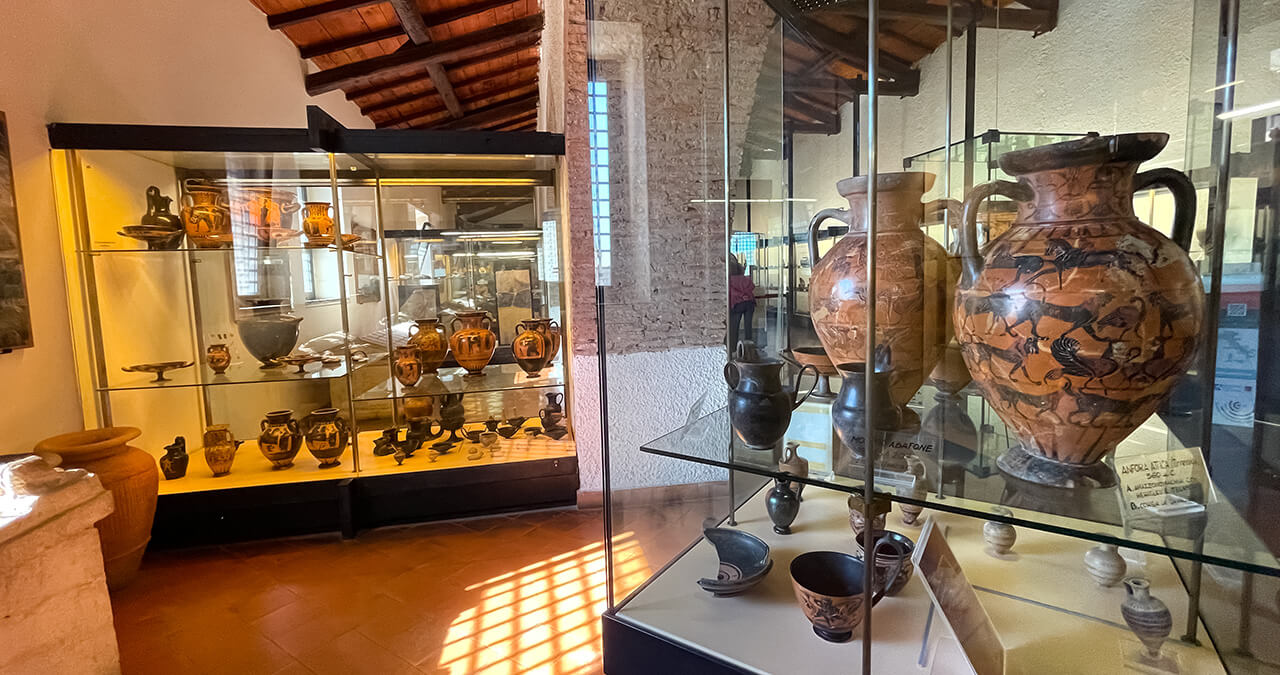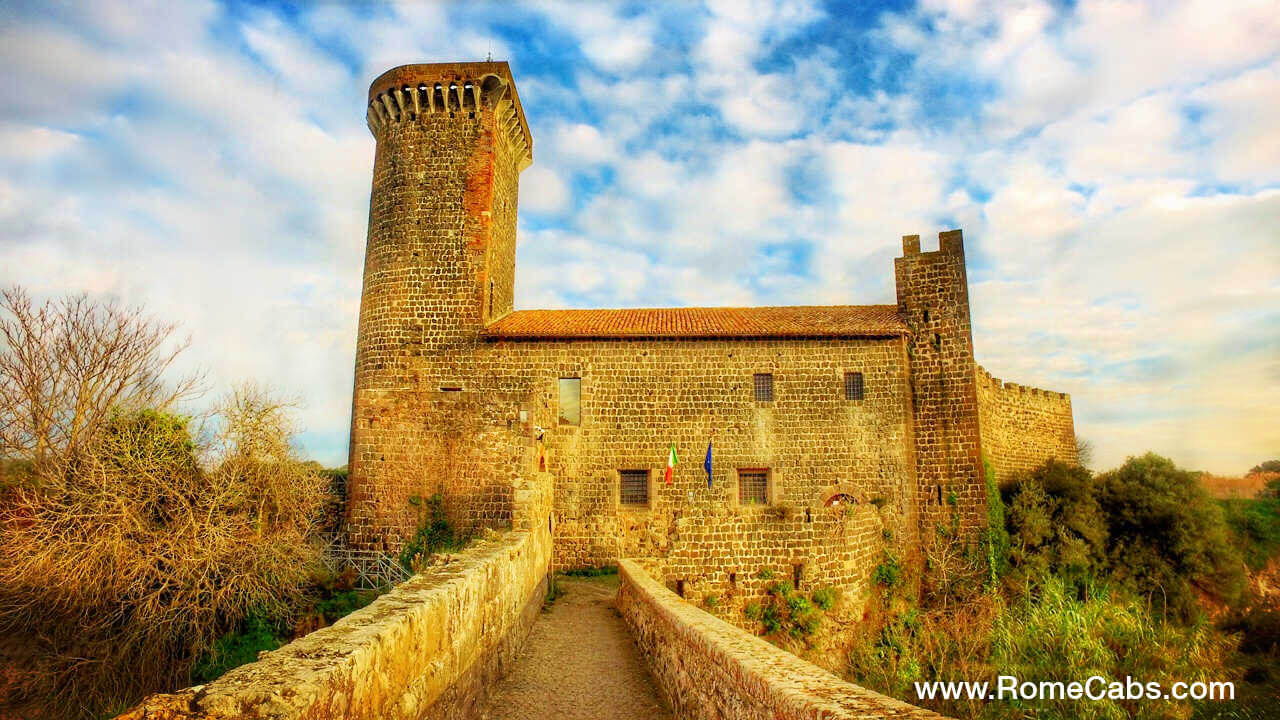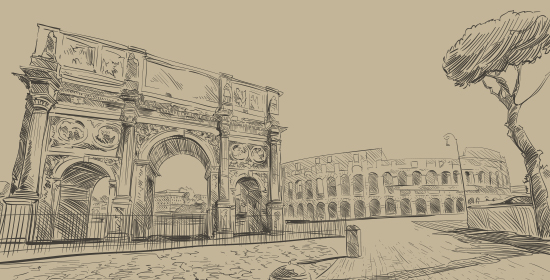10 Etruscan Museums to visit on Etruscan Tours from Rome
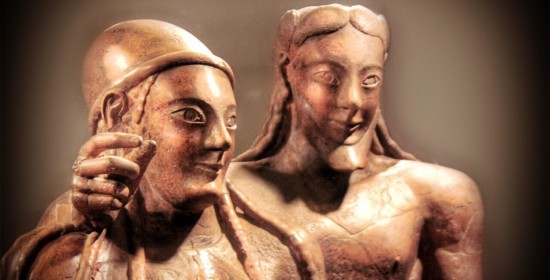
Buon giorno and welcome to Stefano’s RomeCabs, Rome’s leading company for private Rome tours, day tours from Rome, and shore excursions from Civitavecchia. Due to increased interest in the amazing ancient Etruscan civilization that helped shape Italy’s history and culture, we included 10 Etruscan Museums to visit on Etruscan tours from Rome.
Why are Etruscan museums important when touring Etruscan sites such as necropolis and tombs?
When tombs were discovered during archaeological expeditions, the grave goods that belonged to the deceased were placed in Etruscan museums.
They are very precious as they are the main source of information about this mysterious yet advanced ancient civilization that after several centuries of dominating central Italy they disappeared as they were slowly conquered by the ever expanding Rome and absorbed into the Roman culture and society until the Etruscans became obsolete.
As the Etruscans did not leave behind manuscripts or architecture (they used perishable materials such as wood and clay), very little is known about the Etruscans. Their alphabet and language have not yet been deciphered.
However, their tombs and grave goods help us reconstruct many aspects of the Etruscans lives and how their civilization progressed, how the Etruscans looked, how they dressed, how they styled their hair, what weapons they had, what cooking tools they used, what sports they engaged in and music instruments they played, what precious jewelry and accessories they wore, and more.
If you’ve already visited famous necropolis like Banditaccia Necropolis in Cerveteri and Monterozzi Necropolis in Tarquinia, continue your Etruscan tours to also include Etruscan museums that display the amazing grave goods that were once buried in the tombs you’ve visited.
10 Etruscan Museums to visit on Etruscan Tours from Rome
1. Gregorian Etruscan Museum (At the Vatican Museums)
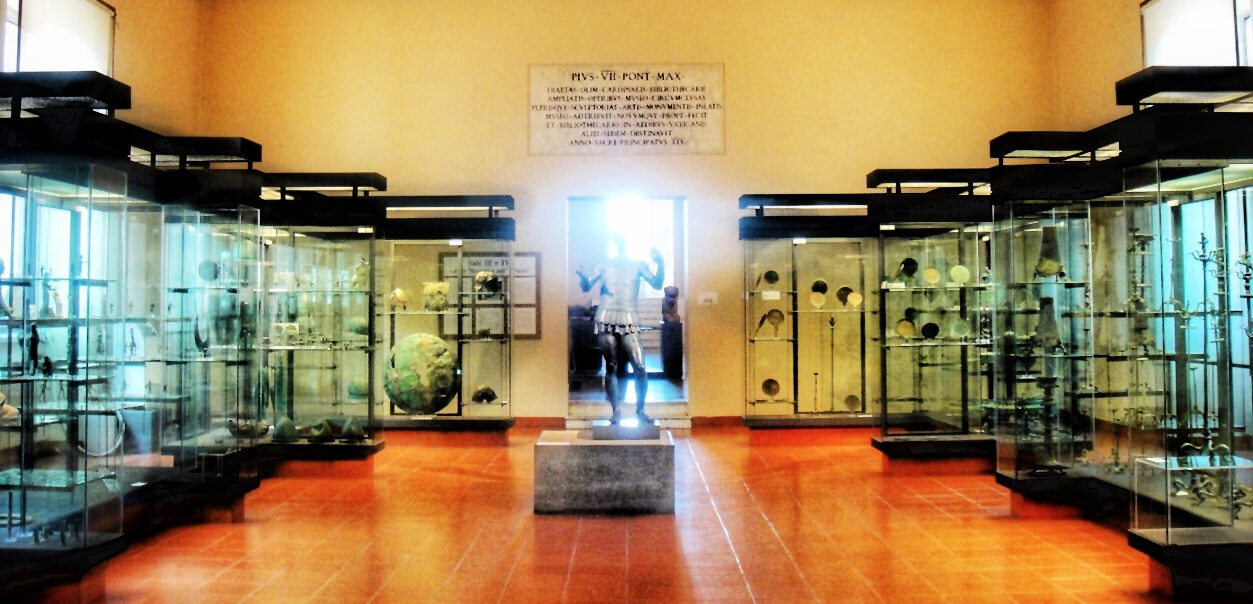
The Vatican Museums are enormous, and include many different collections in smaller museums within the Vatican Museums itself.
The Gregorian Etruscan Museum founded by Pope Gregory XVI and inaugurated in 1837), was one of the first museums dedicated to Etruscan artifacts discovered in excavated tombs in the local region that was once known as Etruria.
The Gregorian Etruscan Museums has 12 Rooms that display the progression of Etruscan antiquities from their early beginnings in the Iron Age (9th century BC) until the age of Romanization.
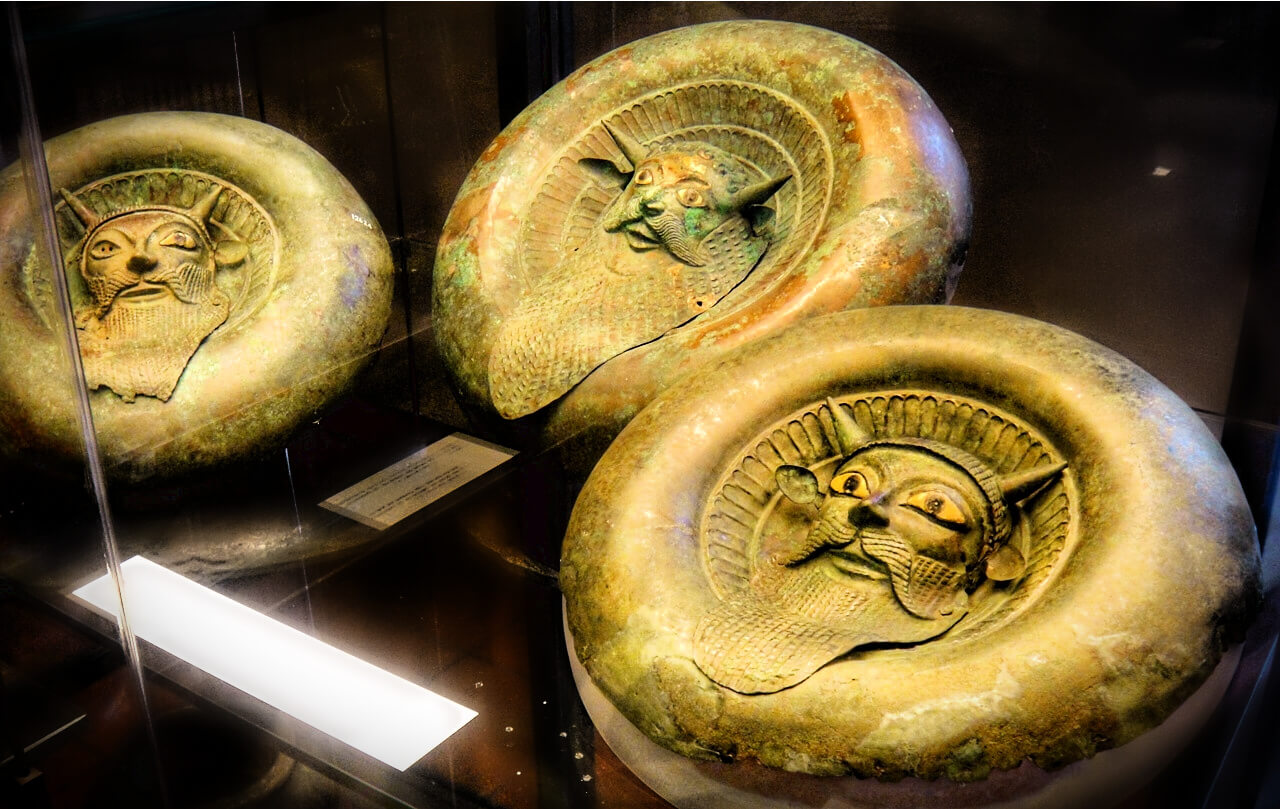
On display, you will find bronze weapons and tools, terracotta and ceramics, votives, funerary urns, sarcophagi, relief sculptures, and an extraordinary collection of gold jewelry (note the delicate granulation technique using micro welding to create designs and motifs using gold granules the size of sand particles mastered by Etruscan goldsmiths, yet unknown to modern goldsmiths).
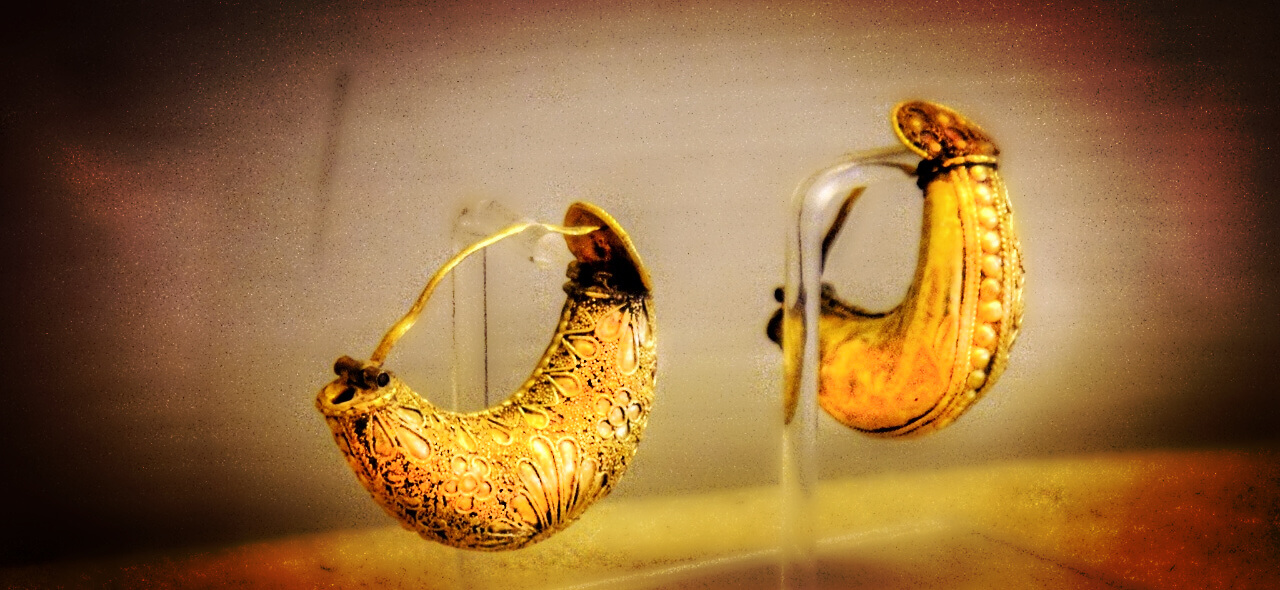
You may visit the Gregorian Etruscan Museum on our Rome in a Day Tour which includes a visit to the Vatican, or Christian Rome Tour offered by our sister company Stefano Rome Tours.
2. National Etruscan Museum of Villa Giulia
One of the most fascinating Etruscan museums in Rome is Villa Giulia, named after Pope Julius III who built this splendid residential Renaissance villa in the mid 1550’s.
Today, Villa Giulia has been transformed into the National Etruscan Museum of Villa Giulia and one of the most significant Etruscan museums that house some of the most important Etruscan artifacts discovered in the territory between the Tiber River and the Tyrrhenian Sea (regarded as Southern Etruria that included prominent Etruscan city-states like Vulci, Cerveteri, and Veio).
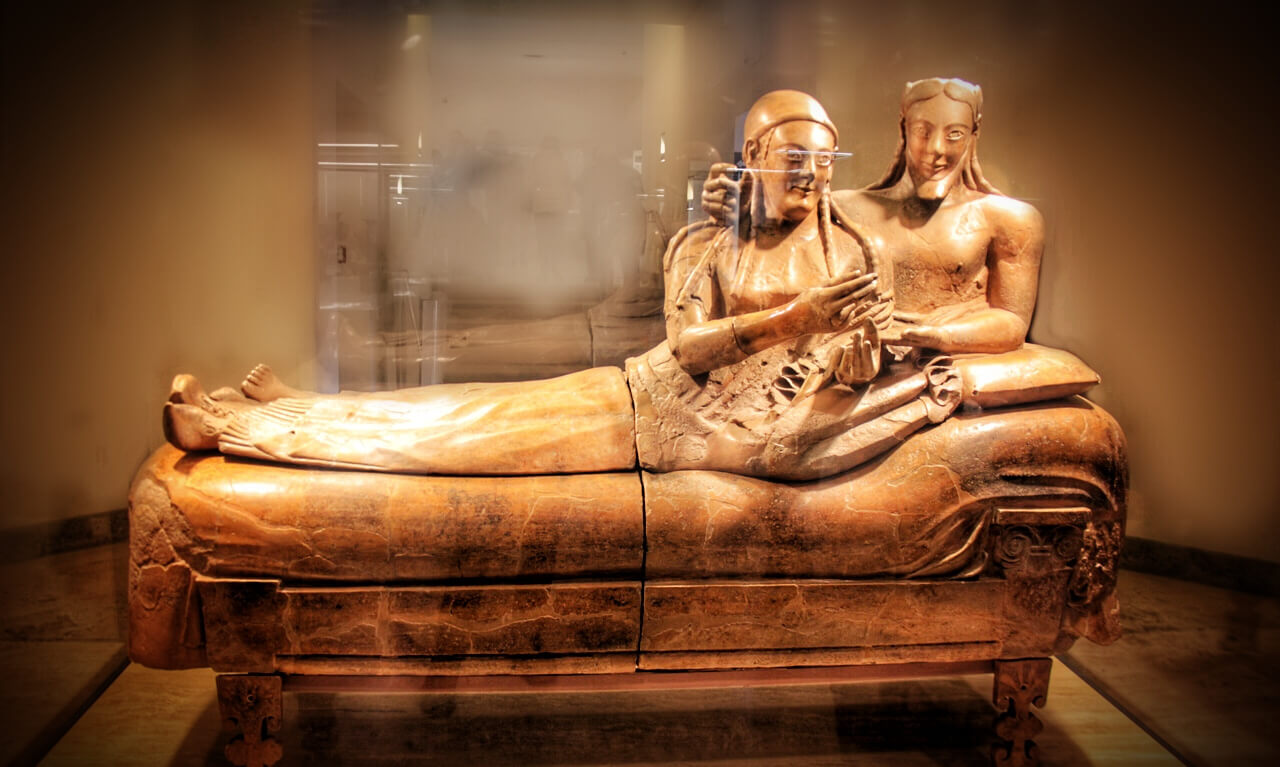
In addition to fabulous collections of pottery, bronzes, ceramics, fine gold and precious jewelry, you will also come face to face with the world-famous 6th century BC terracotta Sarcophagus of the Spouses ( Sarcofago degli Sposi) discovered in Cerveteri and the 6th century BC Apollo of Veii (Apollo da Veio) – both regarded as masterpiece examples of the Etruscan artistic canon of human representation featuring prominent cheekbones, large almond shaped eyes, and the “Etruscan smile”.
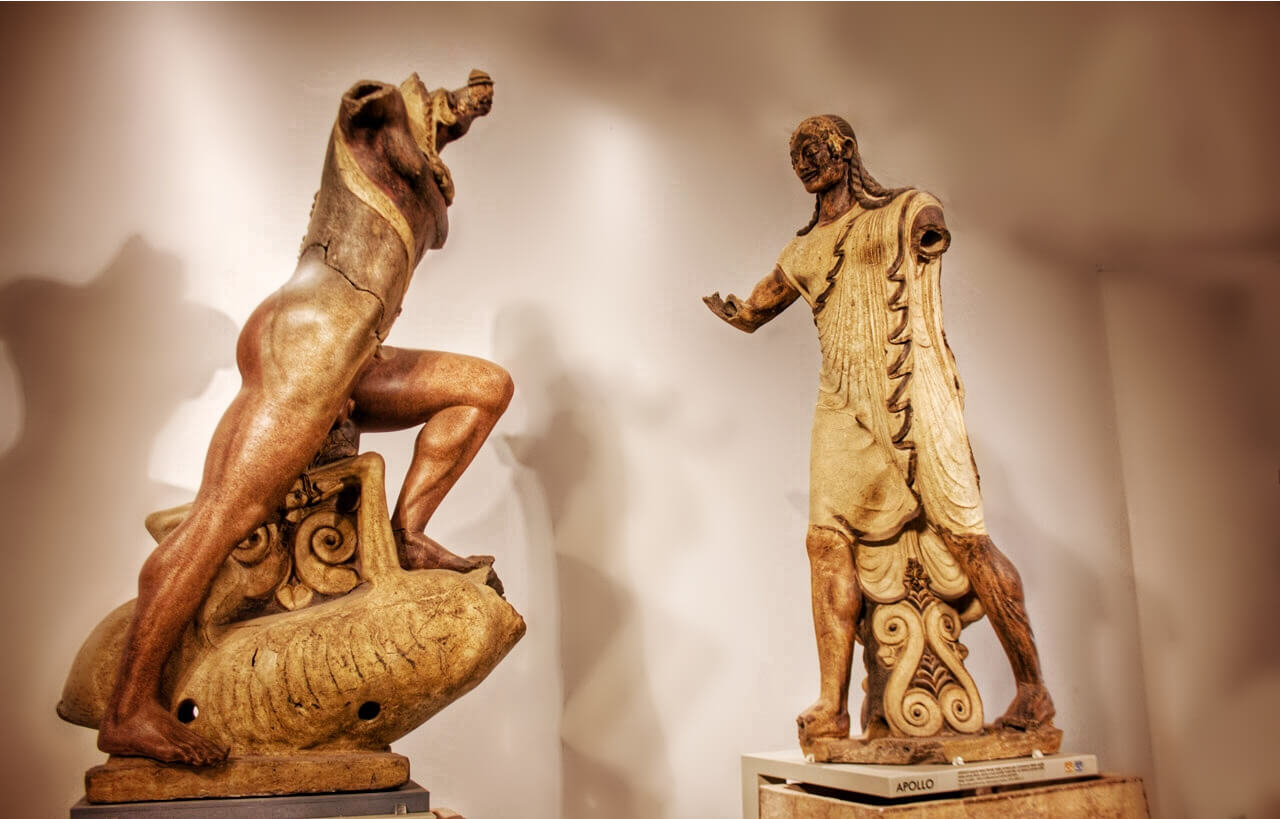
ADMISSION TICKETS:
Full Price € 8.00, Reduced Price € 4.00
Free Admission on First Sunday of the Month, during Culture Week, and on August 15 and September 29
OPENING HOURS
Tuesday to Sunday 9:00 am – 8:00 pm
(closing of the rooms will start from 7:15 pm and the rooms will be closed by 7.30pm);
Ticket office closes at 7:00 PM
Closed on Mondays, on January 1st and December 25th.
Some rooms may be subject to temporary closures or limitations of visiting hours.
You may enjoy a visit to the National Etruscan Museums of Villa Giulia on any of our Rome tours, by simply substituting some sites suggested in the tour with a visit to this museum.
3. National Museum of Cerveteri
If you book our Countryside Splendor Day Tour from Rome / Shore Excursion from Civitavecchia that includes a visit to Cerveteri, or already planning to visit the Banditaccia Necropolis in Cerveteri on your own, be sure to also visit the National Museum of Cerveteri inside the magnificent fortress inside the town that where the museum is located.
The museum features a wide collection of grave goods from the nearby necropolis chronologically displayed to cover different cultural phases of the Etruscan city of Caere (the original name later evolved into Cerveteri), from the early Etruscan period of 9th century BC until the Roman conquest.
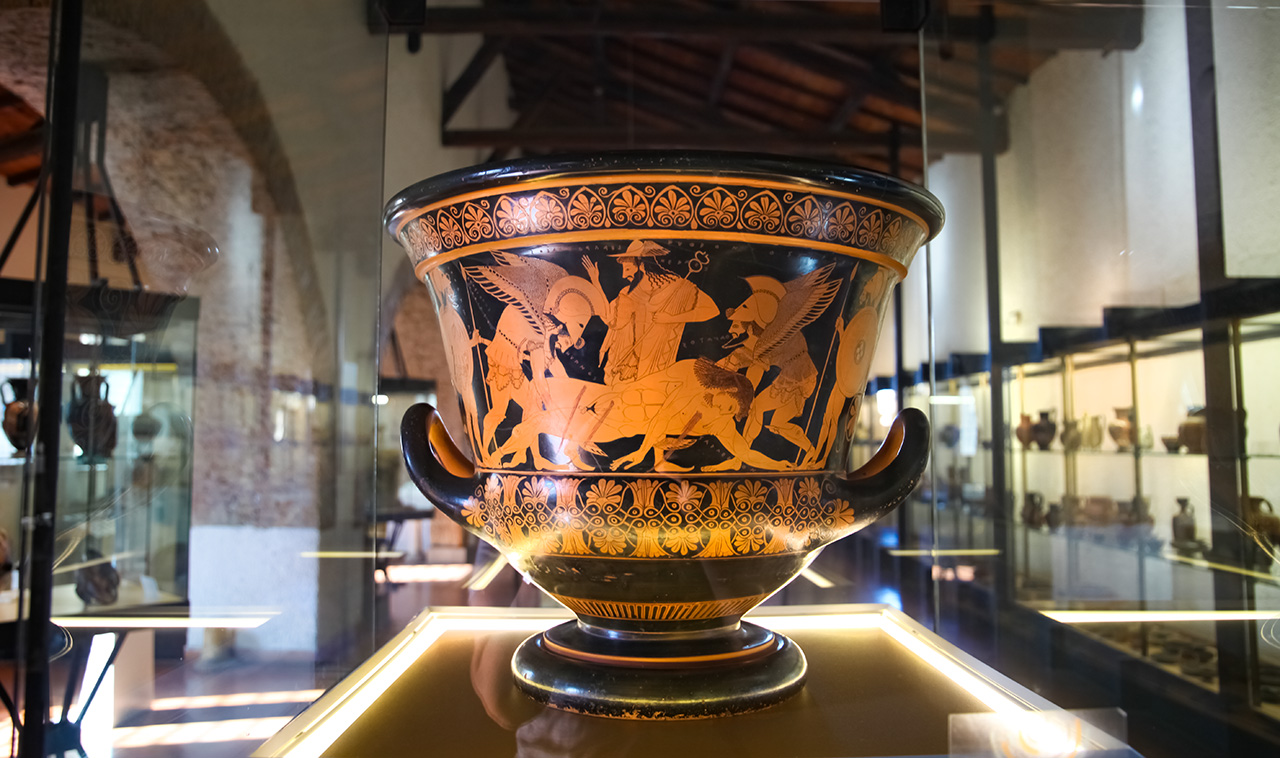
Admission Tickets:
Full price 6.00 € , reduced 3.00 €;
Tickets including necropolis + museum full price 8.00 Euros, reduced price 4.00 Euros.
Opening hours:
Tuesday – Sunday 8.30 – 19.30. Ticket office closes 18.30.
Closed on Mondays, on 1st January and the 25th December.
If you book our Countryside Splendor Tour that includes a visit to the Banditaccia Etruscan Necropolis, you will also have the opportunity to enjoy a visit to the Museum to admire many of the artifacts discovered in the tombs you’ve just explored.
4. National Archaeological Museum of Tarquinia
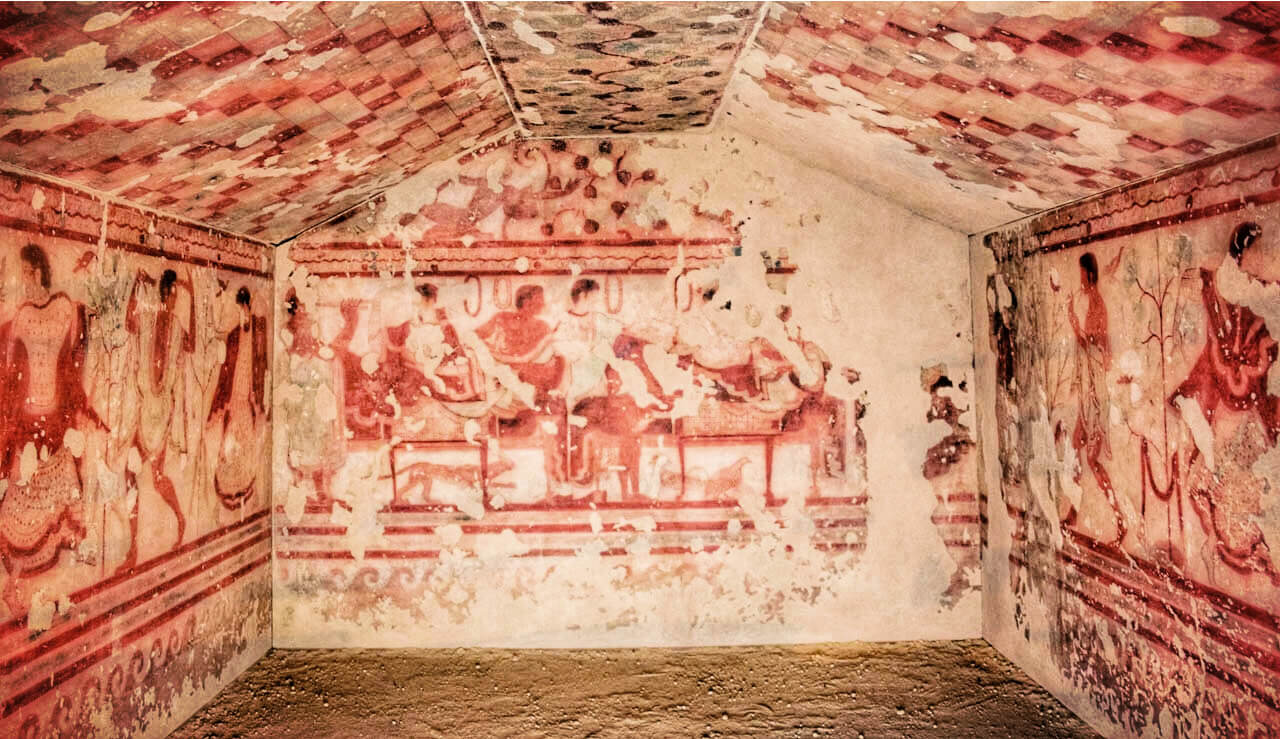
Tarquinia is famous for its Monterozzi Etruscan Necropolis that features underground painted tombs that are the most unique in the world.
However, the grave goods that were discovered inside these incredible tombs are housed in the National Archeological Museum of Tarquinia that’s inside the Renaissance era Palazzo Vitelleschi across 3 floors.
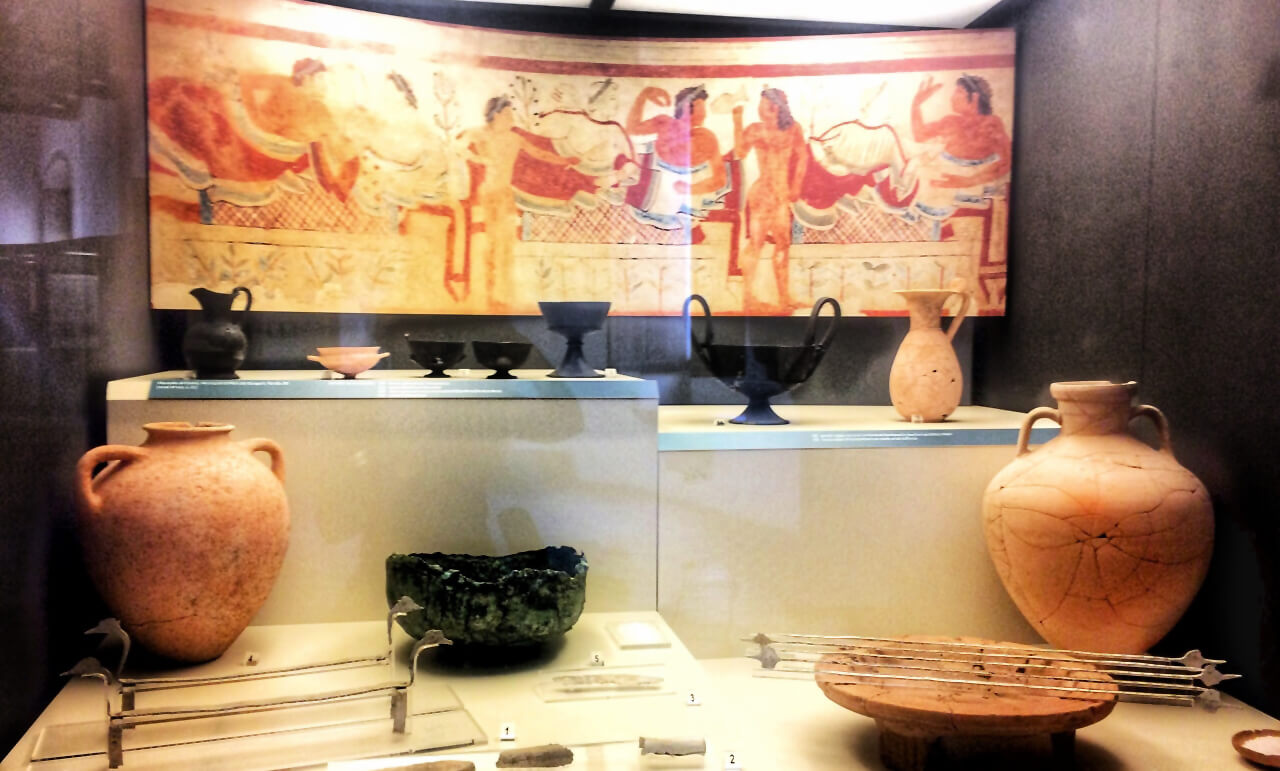
The ground floor displays sarcophagi and various other stone artifacts from the middle of 4th century BC.
The 1st floor features pottery in chronological order beginning with the early Villanovan culture, as well as the native type of black bucchero pottery, and pottery imported by the Etruscans from Ancient Egypt and Greece. In addition you will also find an Etruscan bronze coins and gold jewelry collection.
The 2nd floor features some restored paintings from the tombs of the Monterozzi Necropolis, such as “Tomb of the Triclinium”, “Tomb of the Bigas”, “Tomb of the Olympic Games” and “Tomb of the Ship”.
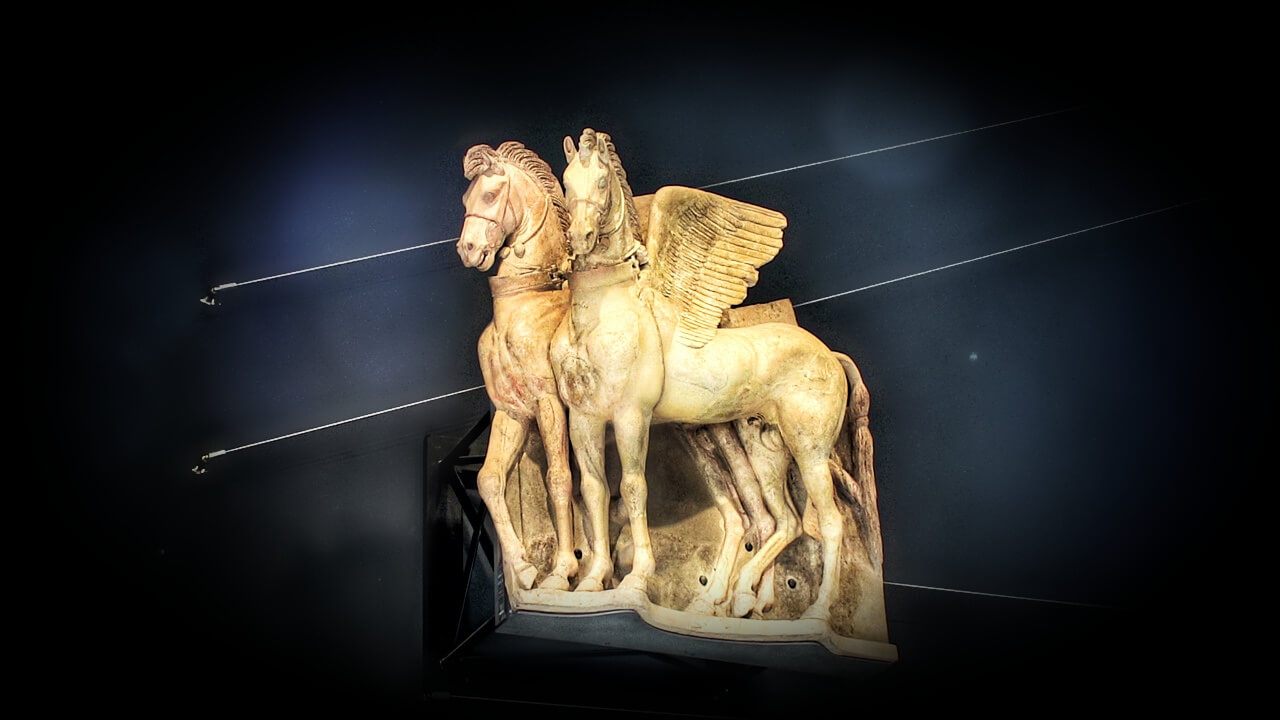
A spectacular relief of winged horses (“Cavalli Alati”) that once adorned an Etruscan temple in 4th century BC Tarquinia are also on display in the hall of weapons.
Opening Hours:
8:30 AM – 7:30 PM
Ticket office closes at 6:30 PM
Closed on Mondays, January 1, and December 25.
Admission Tickets:
Full price € 6,00, Reduced Price € 3,00
cumulative entrance (necropolis + museum) € 8,00
cumulative reduced (necropolis + museum) € 4,00
You have the opportunity to visit this amazing museum on the popular Mysterious Etruscans tour which includes a visit to the Monterozzi Necropolis just outside the city of Tarquinia.
5. National Archaeological Museum of Vulci
Not to miss when visiting Etruscan museums is Castel dell’Abbadia in Vulci. This is not only a magnificent Medieval era fortified castle surrounded by a moat and a 3rd century BC Etruscan-Roman bridge, but also because it houses the National Archaeological Museum of Vulci which exhibits Etruscan artifacts discovered during archaeological excavations in Vulci.
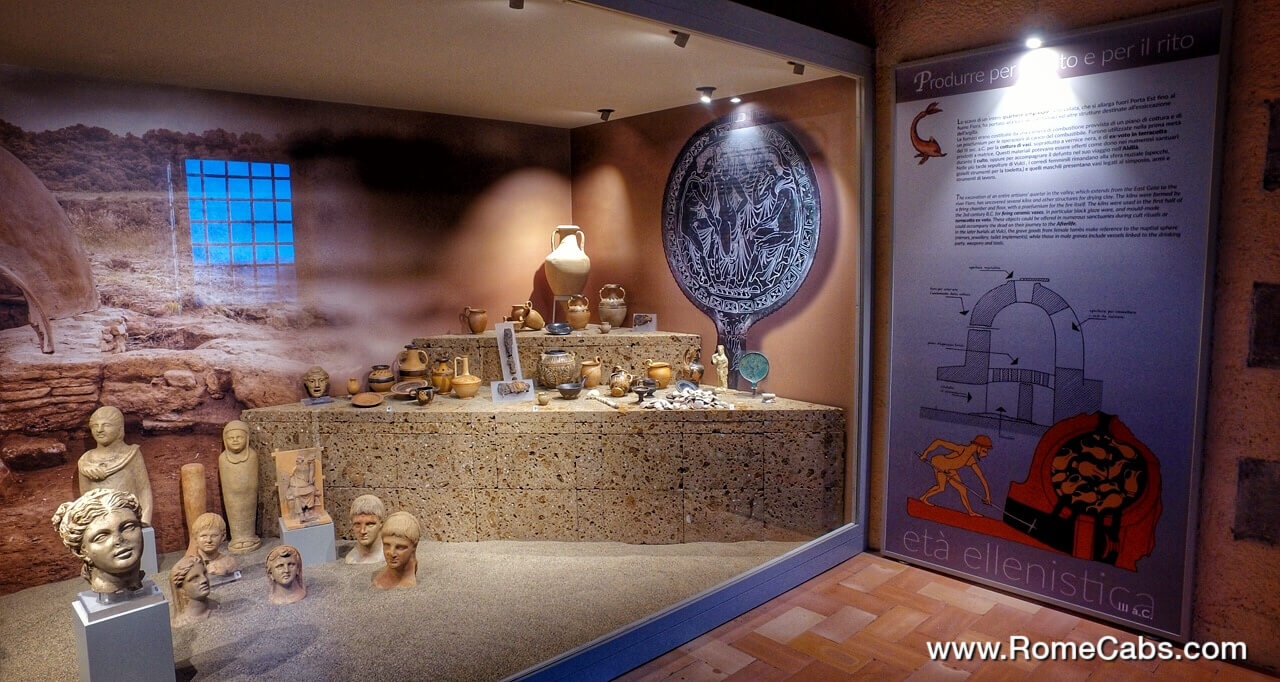
Across multiple levels, the museum features an extensive collection from the Bronze Age up to 2nd century BC, including rich grave goods from the tombs of Vulci, and elegant black Etruscan vases known as bucchero, as well as Greek vases with painted figures.
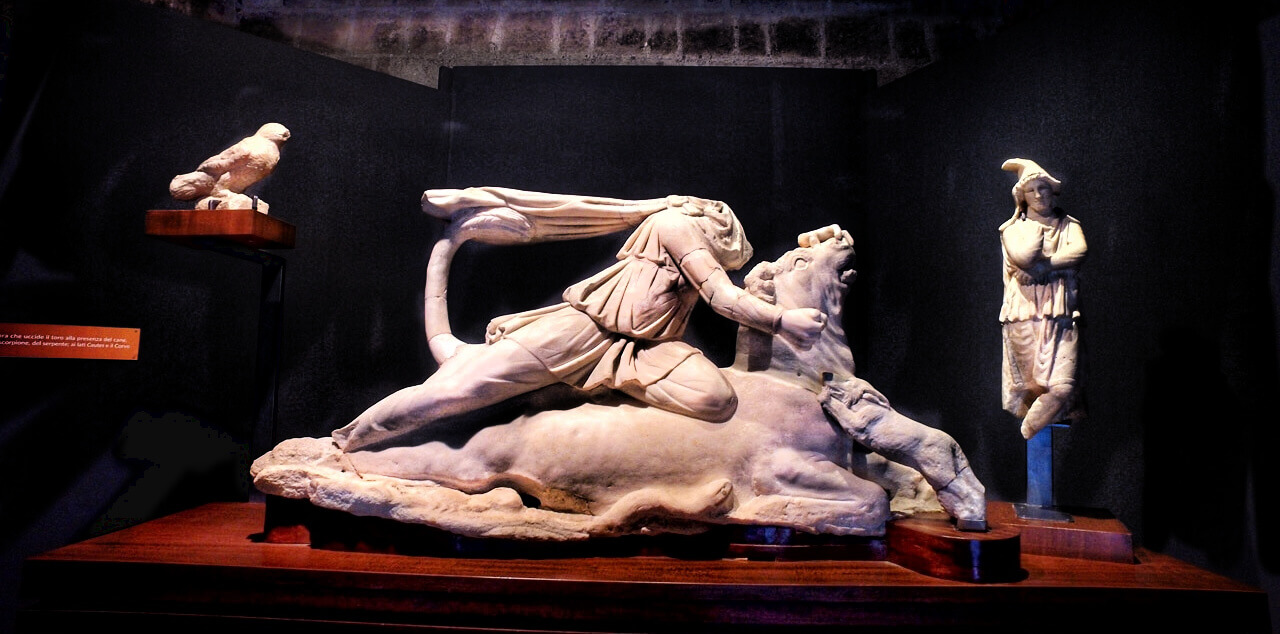
Feel free to enjoy the picturesque are surrounding the Castle that was previously a 12th century Cistercian abbey, and the ancient arched bridge nicknamed “Ponte del Diavolo” (the Devil’s Bridge) below which is a deep ravine – an atmosphere that would surely make you feel you’ve traveled back in time a thousand years.
Opening hours:
8:30 AM– 7:30 PM
Tuesday – Sunday
Closed on Mondays, January 1 and December 25
Admission Tickets:
full price 2.00 €; reduced price 1.00 €.
6. Museo Archeologico Nazionale in Chiusi
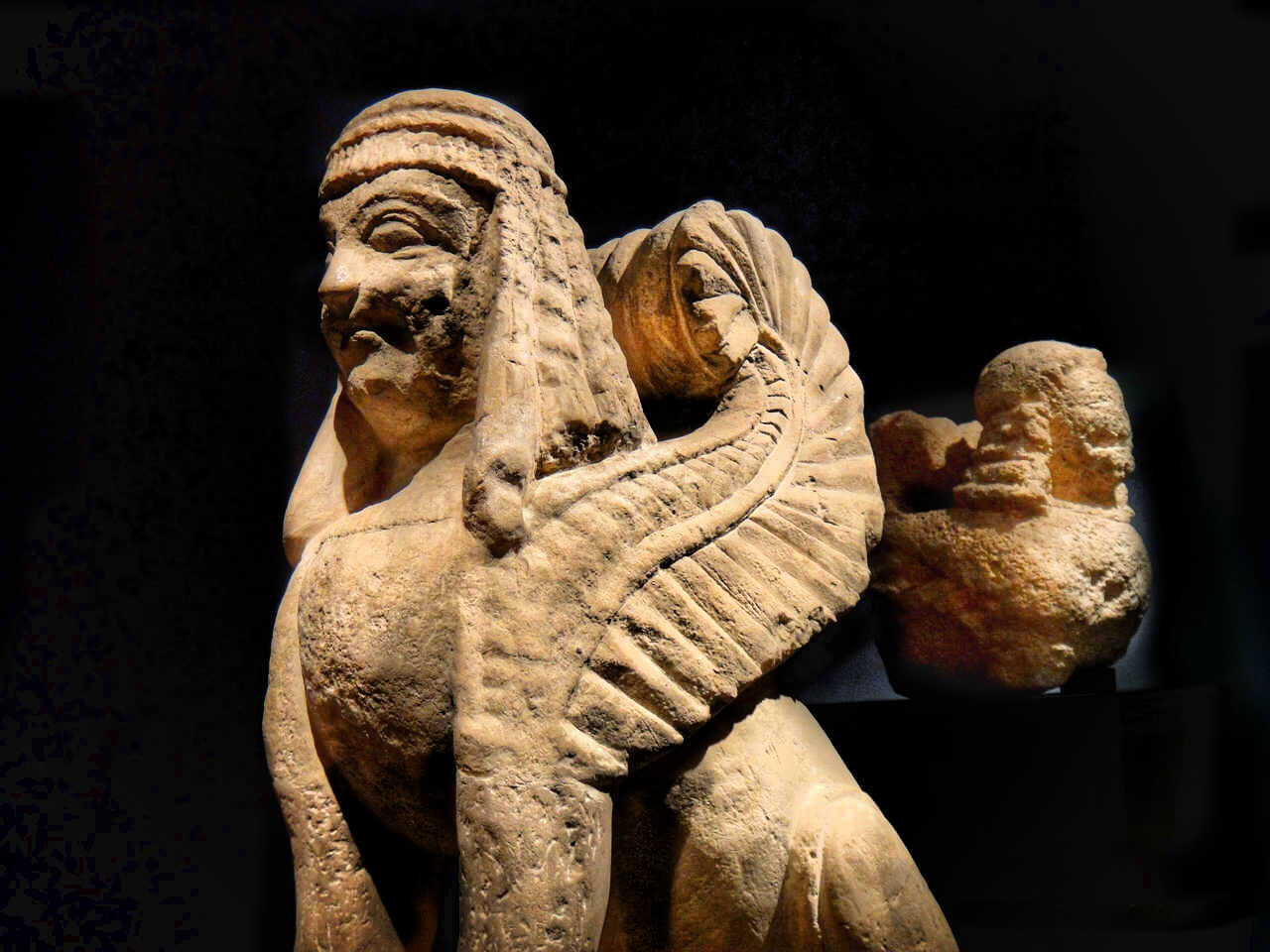
Chiusi is a charming historic town in southern Tuscany and a previous prominent Etruscan city, and it’s Archeological Museum merits a visit.
Across 2 floors, the museum exhibits artifacts from the territory of Chiusi and Chianciano Terme takes you on a chronological journey of the Etruscan era with a spectacular collection of bronze artifacts, ceramics including the characteristic Etruscan bucchero pottery, statues and reliefs, votives, urns made of terracotta and alabaster, jewelry, sarcophagi, tomb findings, and more.
Opening hours:
Every day from 9.00 AM to 8.00 PM.
Admission Tickets:
full-fare € 6,00 – reduced-rate € 3,00 (18-25 years old)
Free entrance during the first Sunday of each month.
As Chiusi is close to Chianciano Terme, may enjoy visiting both Etruscan Museums in the Chiusi and Chianciano Terme Tour with Stefano Rome Tours.
7 Etruscan Museum of Chianciano Terme
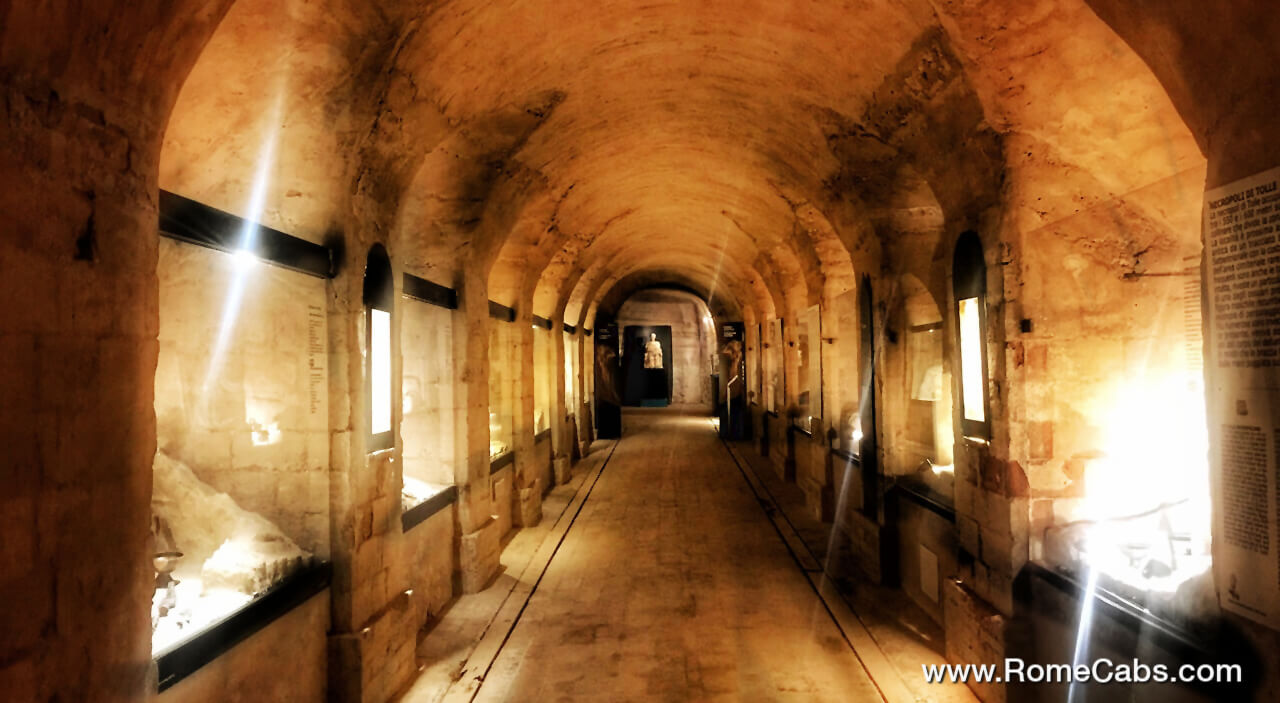
A short drive from Chiusi will take you to Chianciano Terme, a town reminiscent of the Federico Fellini era and still famous for some of the best thermal spas in central Italy.
What is not to be missed (though surprisingly underrated) is the Etruscan Museum of Chianciano Terme which includes quite a remarkable collection of Etruscan artifacts across 4 floors. Also very interesting are the real-life reconstructions of tombs, sepulchral chambers, and other structures that allows the visitor to see what they actually look like when excavated.
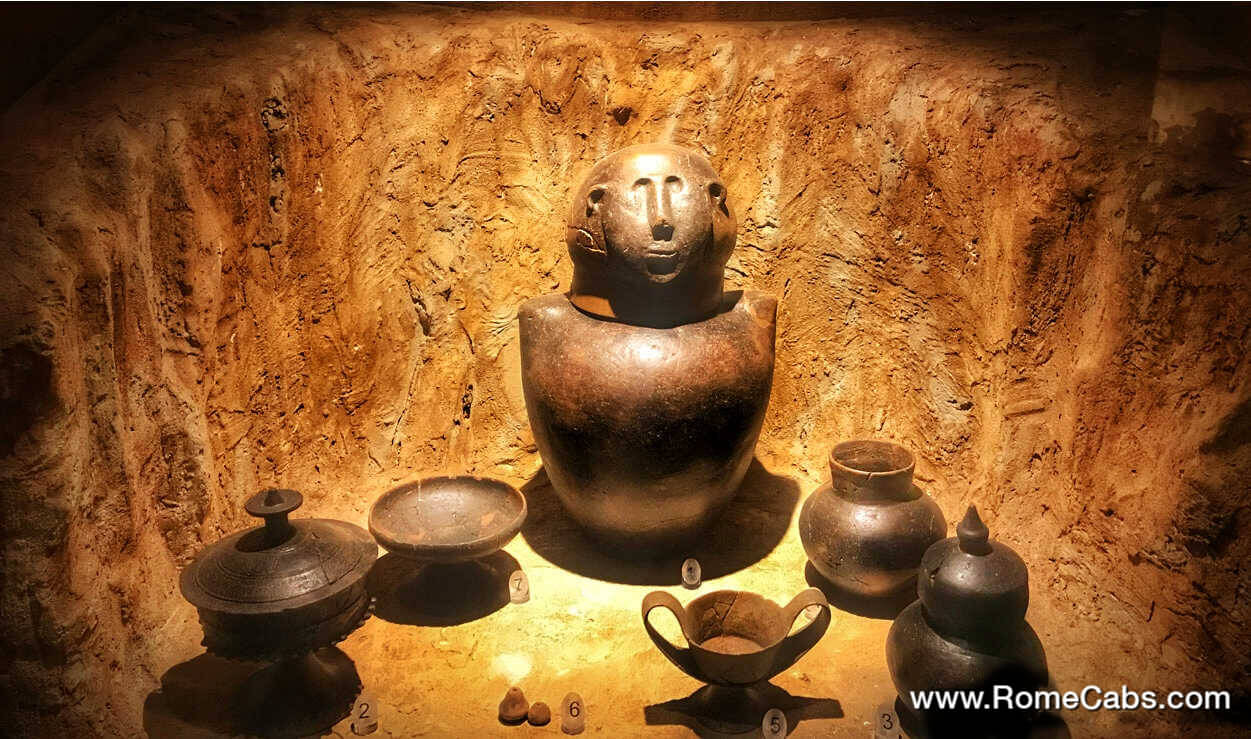
The underground level includes a long gallery featuring reconstructions of 7th century BC sepulchral chambers recovered from a nearby necropolis that includes the unique human-like cinerary urns known as “Canopic jars“. These are unlike other cinerary urns displayed in other museums, many of which represent small houses.
The ground floor features real-life reconstructions of 7th-century BC funerary chambers from tombs excavated in the region, along with the recovered grave goods made of bronze such as shields and ossuary.
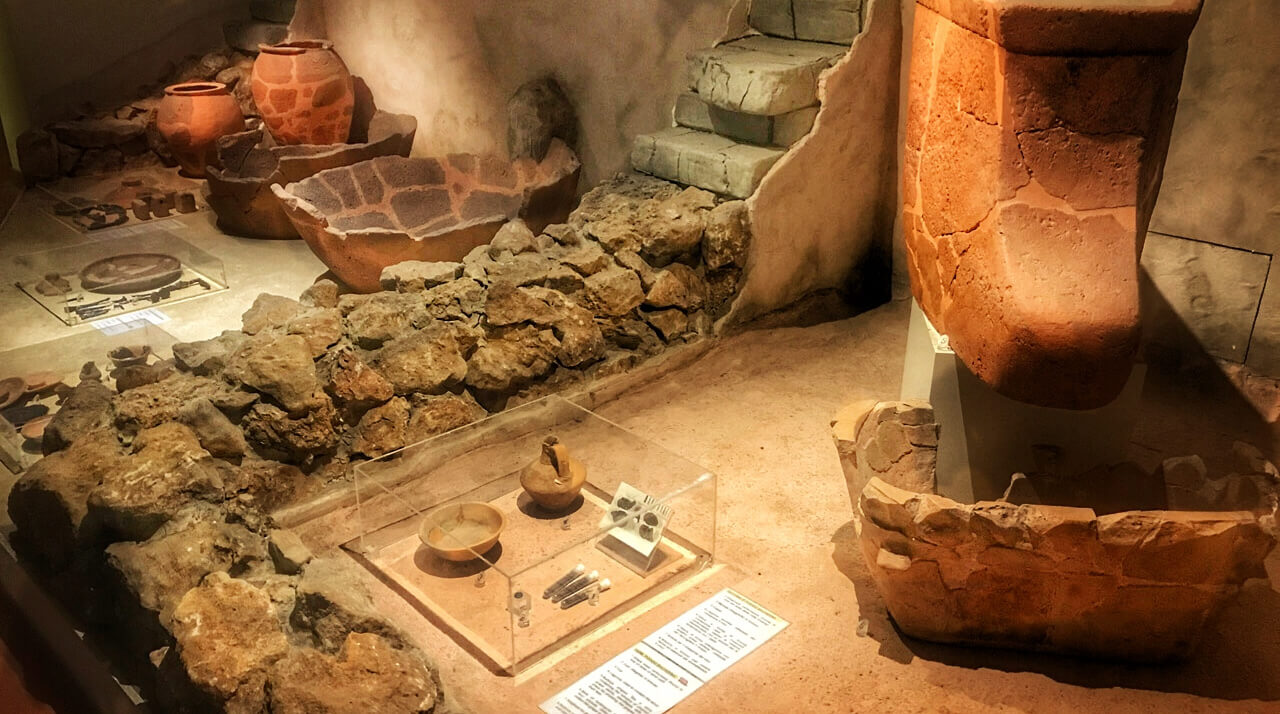
The first floor displays artifacts related to Etruscan food and wine preparation along with construction techniques, with real-life reconstruction of an Etruscan temple pediment with remains of actual statues and friezes that were recovered from nearby sites.
The 2nd floor is quite rewarding as it recreated an actual Etruscan banquet hall including tricliniums (Etruscan reclining sofas) on which Etruscan men reclined to enjoy their meals alongside their wives (quite a scandalous phenomenon in the opinion of the prudish patriarchal Romans).
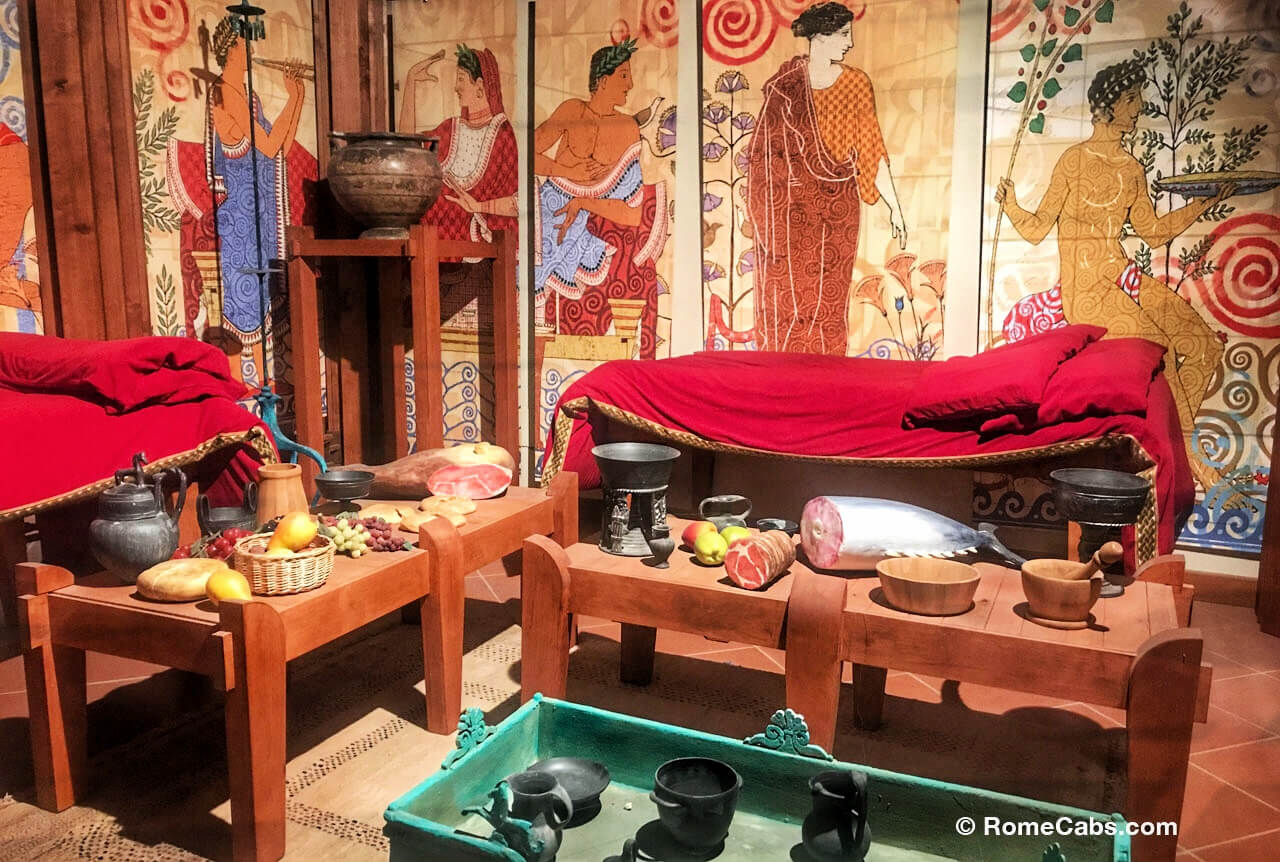
A tactile path in various rooms provides visually impaired visitors raised objects with braille captions.
All in all it’s a delightful museum that offers both amazing artifacts, and reconstructions of actual places for a more dimensional experience of the Etruscan civilization.
Viale Dante, 53042 Chianciano Terme (SI) – Italy
8. Archaeological Museum of Sarteano
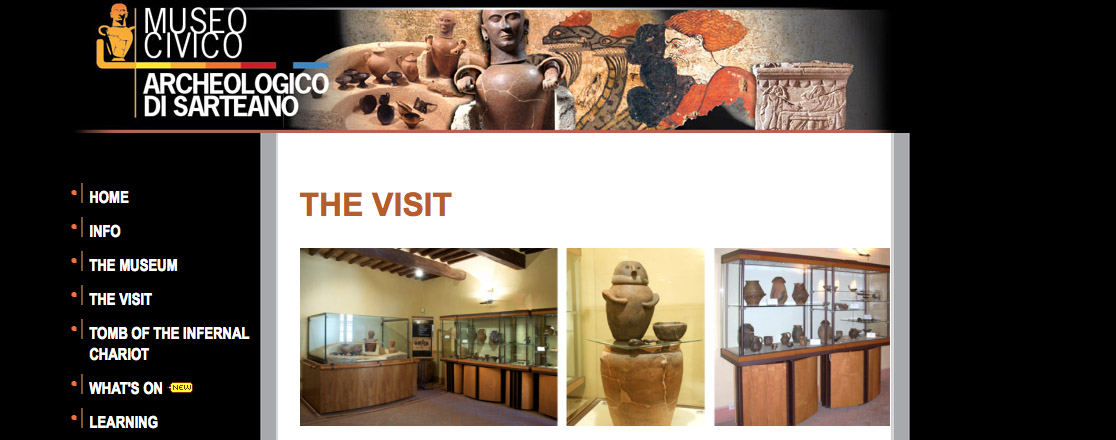
The Archaeological Museum of Sarteano in Tuscany is housed inside the 16th century Palazzo Gabrielli, and includes important traces of the ancient Etruscan era that dominated this region from 9th century BC to 1st century BC.
The museum features Etruscan artifacts such as ancient “pozzetto graves” (graves dug like wells containing a funerary run), human shaped urns known as “canopic jars”, reconstructed tomb chambers, elegant funerary “cippus” (block of stone) with relief scenes of an Etruscan funeral ceremony, rare painted pottery, and in the basement a reconstruction of the Tomb of the Infernal Chariot that you may visit by appointment at a nearby necropolis site.
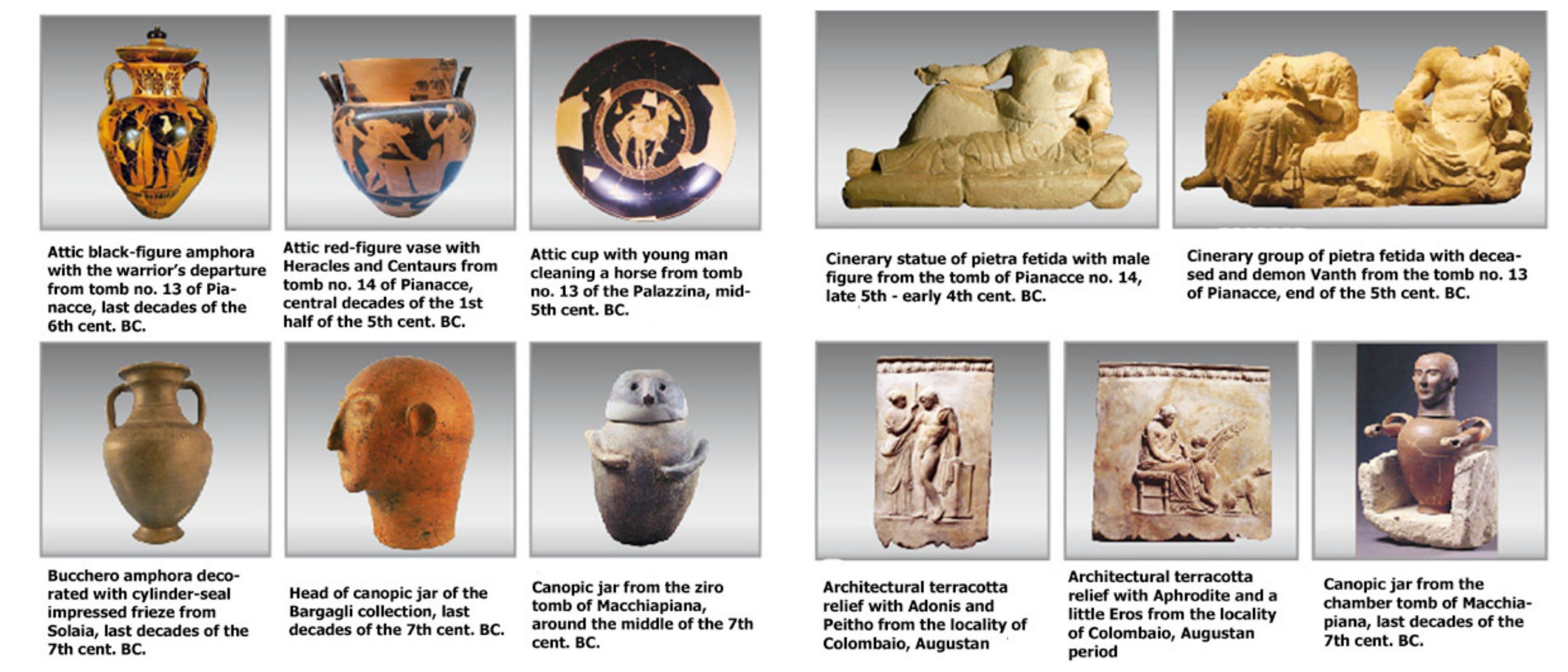
If you are unable to visit the actual Tomb of the Infernal Chariot which is only open on Saturdays for brief times, the museum reconstruction will give you an excellent idea of what the actual painted tomb looks like. Also if you wish to spend more time studying the various paintings and symbolism, the museum visit would be a great option as the tomb is only open for a brief visit and the light is relatively dim.
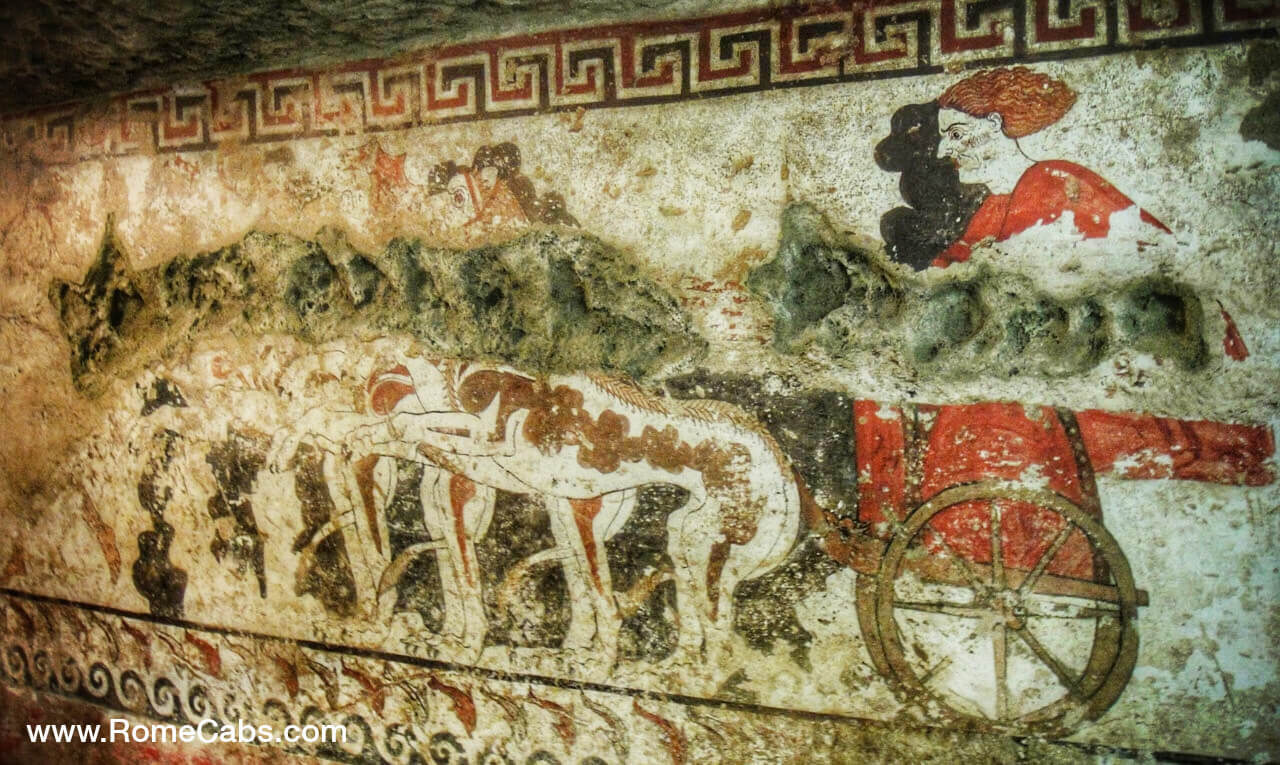
ADDRESS
Via Roma n. 24
53047 Sarteano (Siena) Italy
OPENING HOURS
10,30 a.m. – 12,30 a.m. and 4,00 p.m. – 7,00 p.m.
From April to October and Christmas holidays:
from Tuesday to Sunday, closed on Mondays
(closed Christmas and the morning of January 1).
From November to March:
Saturday and Sunday, holidays and the eve of holidays.
TICKETS
Museum € 4,00 *
Reduced Museum € 3,00 *
Learn MORE about Tomb of the Infernal Chariot on our blog and also watch the video:
9. MAEC (Museo dell’Accademia Etrusca) in Cortona
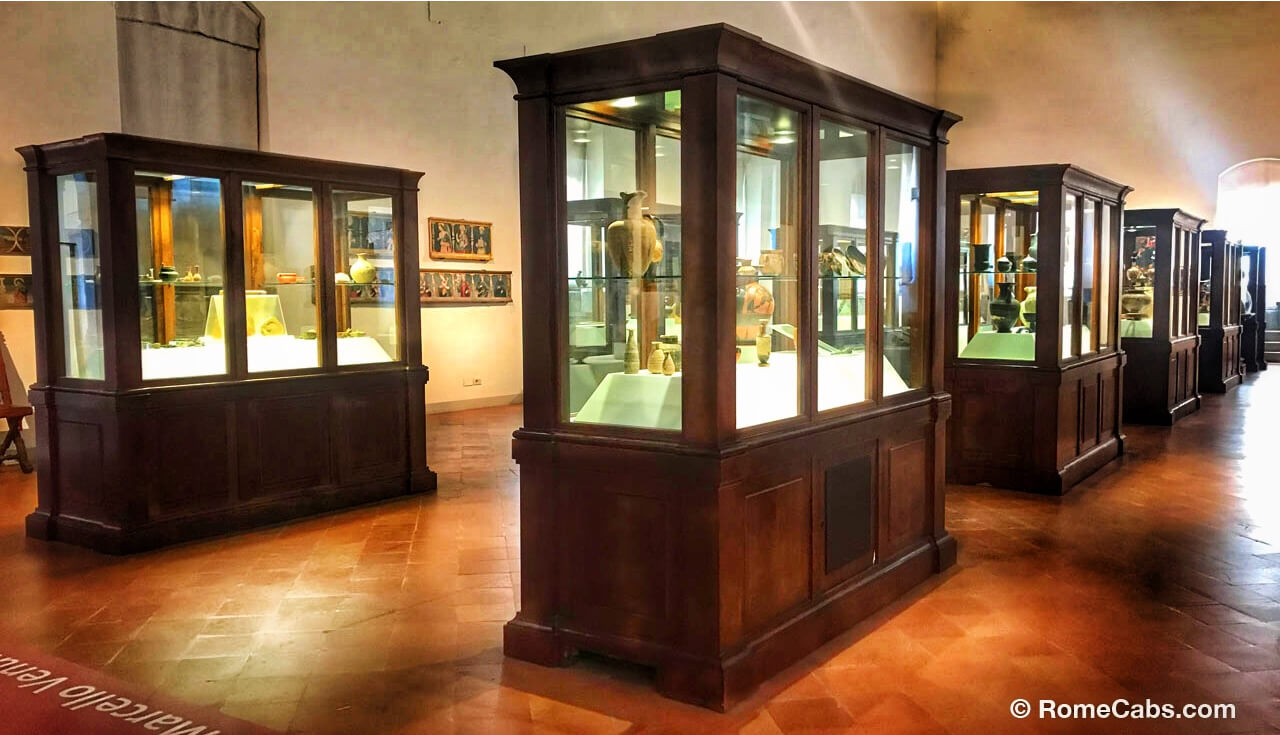
Cortona may have been made more famous by the book and film Under the Tuscan Fun, but Cortona has been around since the Etruscan times (named Curtun) and a member city state of the Etruscan League.
Given Cortona’s strong Etruscan roots, it’s no surprise that Cortona also has its own Etruscan museum: Museo dell’Accademia Etrusca.
The most notable Etruscan artifacts are the 5th century BC bronze Etruscan Chandelier made using the lost wax technique using a single mold, the 3rd-2nd century BC “Tabula Cortonensis” , and a gorgeous gold brooch.
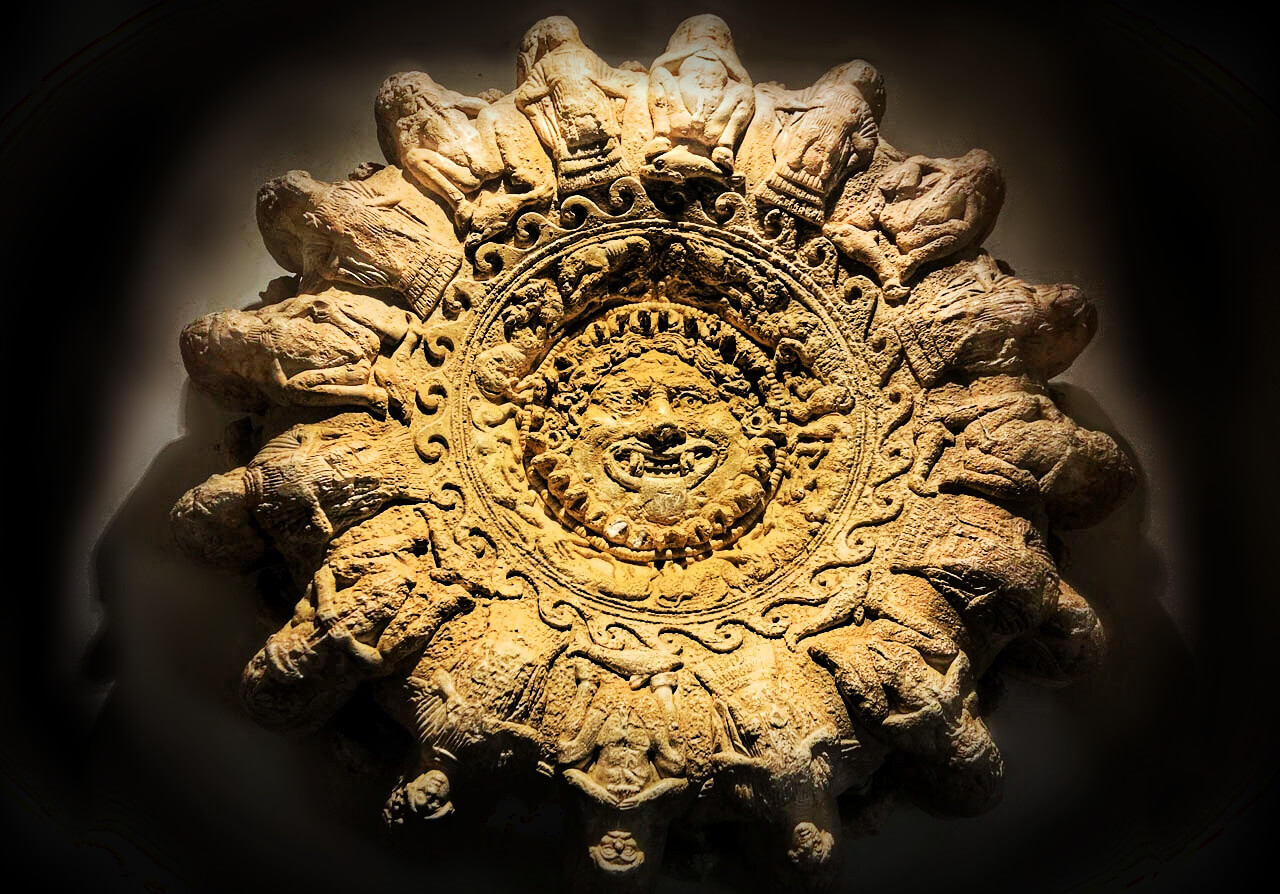
The Tabula Cortonensis is a tablet etched with 40 lines of Etruscan inscription engraved onto the surface of a thin rectangular bronze tabula that was discovered broken in 8 pieces (with the 8th one missing). The text references to a particular sale of land, giving us a glimpse in the affairs of the ancient Etruscans living in this region.
If you are planning to stay in Cortona for a few days, don't miss the opportunity to visit this Museum. RomeCabs also offers transfers from Rome to Cortona (or from Fiumicino Airport to Cortona) to make your arrival in this Tuscan town easy and efficient.
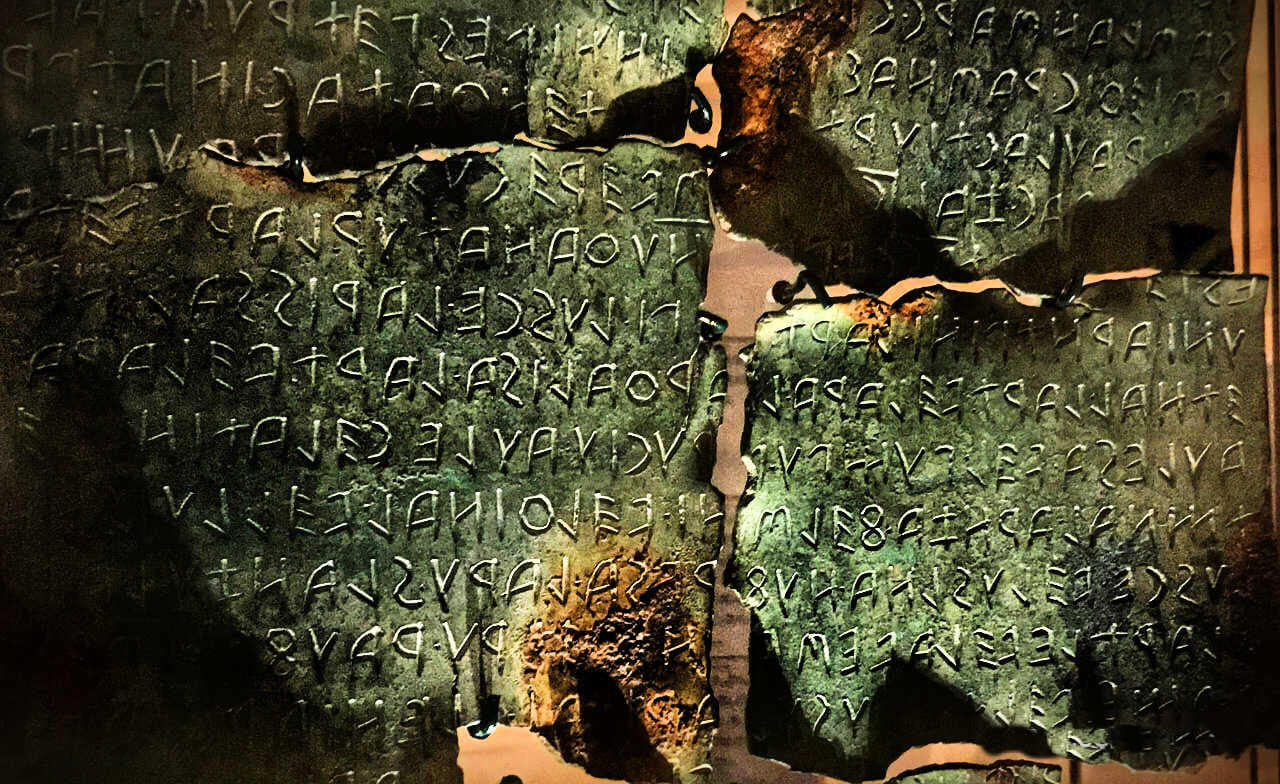
ADDRESS:
Piazza Signorelli 9 Cortona
OPENING HOURS:
April 1 – October 31: Open from 10.00 am to 7.00 pm
November 1 to March 31: Open from 10.00 am to 5.00 pm
Closed on Mondays and December 25th
TICKETS:
Approximately 10 EUROS
The Etruscan museum in Cortona can be visited on our Montepulciano and Cortona Tour from Rome, and a day tour from Rome to Cortona and Arezzo.
10 National Archaeological Museum of Tuscania
Housed inside the 15th-century Renaissance-era convent of S. Maria del Riposo, the National Archaeological Museum of Tuscania merits a visit while in Tuscania.
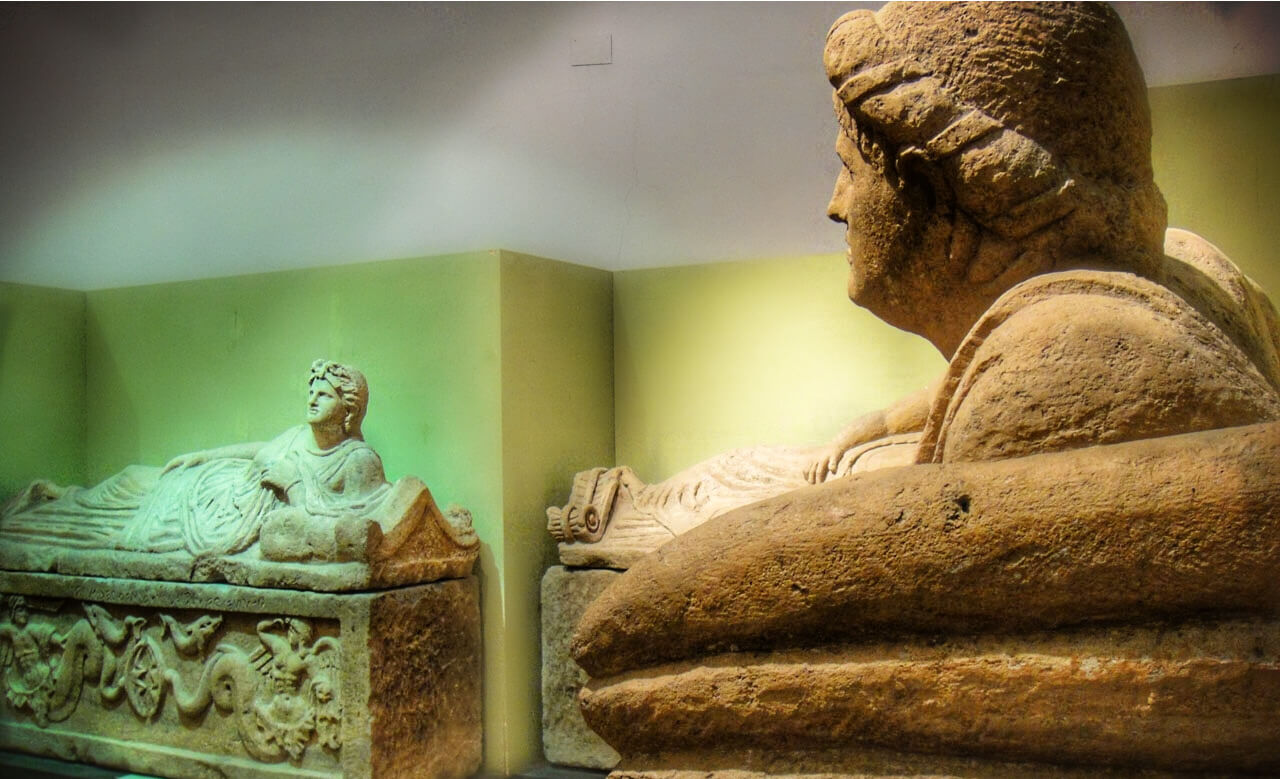
This museum features remarkable grave goods including sarcophagi, furnishing, pottery and more from tombs discovered in the area, offering visitors a glimpse into the lives of Etruscan families who once occupied this region.
Throughout Tuscania, you will also see sarcophagi on display in squares – vestiges of the Tuscania’s Etruscan past.
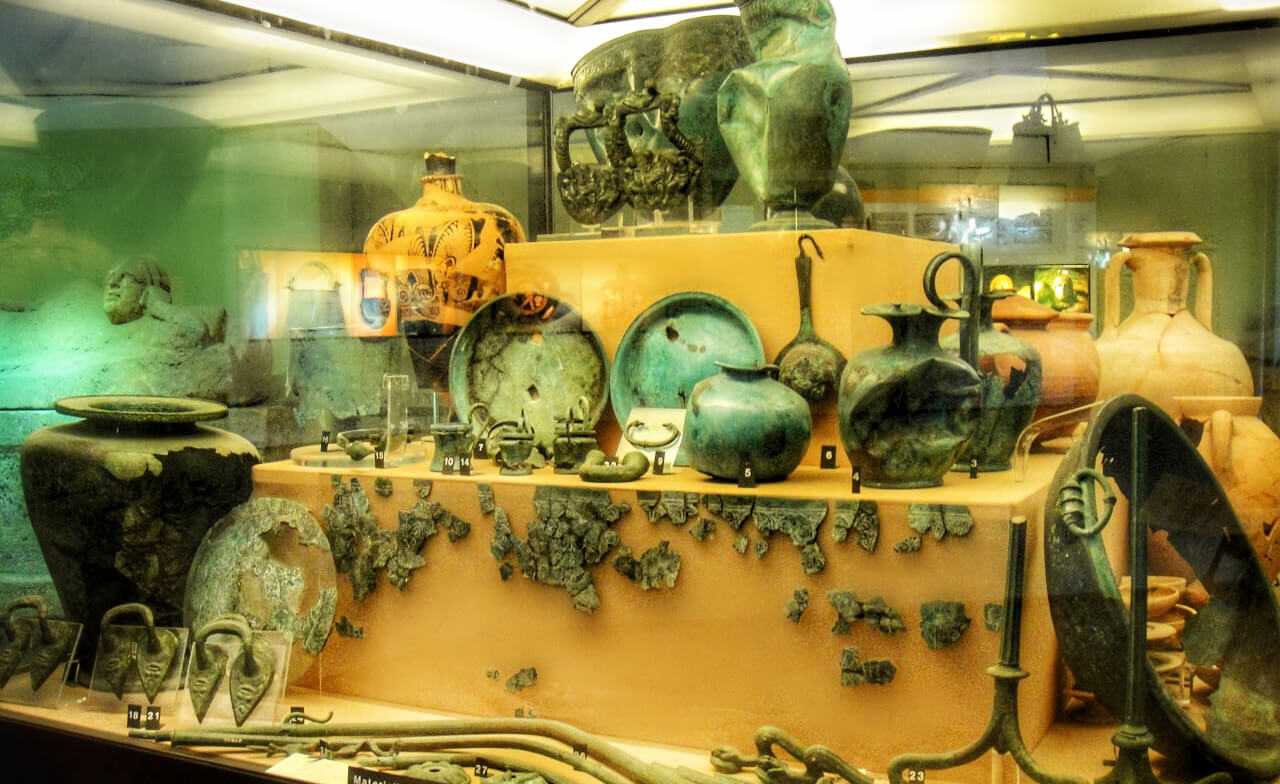
While most Etruscan museums charge admission, the National Archaeological Museum of Tuscania has FREE ENTRY, so there’s no reason not to stop in and admire these ancient Etruscan findings.
You can visit this wonderful museum on our Medieval Magic Day Tour from Rome, and Mysterious Etruscans countryside tour from Rome.
Opening hours: 8.30 – 19.30 Tuesday – Sunday, closed on Mondays.
Admission: free
Thank you for reading our travel blog 10 Etruscan Museums to visit on your Etruscan Tours from Rome.
If you wish to visit any of the above amazing Etruscan museums visit our tours in Italy from Rome mentioned above that include opportunities to visit many of these museums, or contact us for customized Etruscan tours from Rome.
If you are traveling to Italy and require driver service for transportation, RomeCabs also offers transfers from Rome across Italy.
We look forward to showing you beautiful places as well as fascinating Etruscan Museums in Italy!
The RomeCabs Team
- Stefano’s RomeCabs Facebook
- Twitter: @RomeCabs
- RomeCabs Flickr Photo Gallery
- Recommended on CRUISE CRITIC
POPULAR ROMECABS TRAVEL BLOGS:
5 Romantic villages near Rome you should visit – RomeCabs
Must See Countryside Wonders on your way to Civitavecchia Cruise Port
Traveling to Italy this summer? Don’t forget to bring THESE with you
